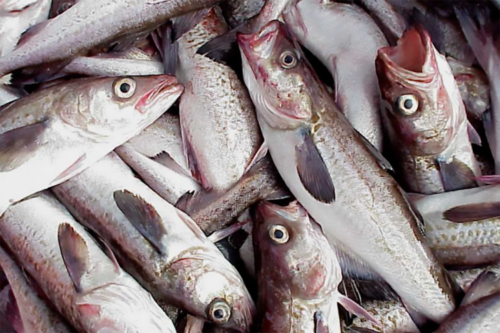
NOAA Using New Tools, Data To Study Gulf Of Alaska Pollock, Cod Numbers

In evaluating Alaska pollock and Pacific cod productivity in the Gulf of Alaska, scientists considered three pieces of information:
- Results from climate models that show that recent extreme temperatures in the Gulf of Alaska were only possible with global emissions from fossil fuel consumption and other human activities
- Observations that both the cod and pollock stocks produce very few young fish during these extreme temperature anomalies
- Further results from climate models that show that these extreme events are expected to be much more common in the current climate than in recent decades
They used simple modelling techniques to compare current stock productivity with the recent past.
Specifically, they looked at how fish responded to the range of temperatures that could be expected under historical conditions, when human influences to the Gulf of Alaska climate were not so strong. They compared those historical responses to the level of productivity that we can expect from the cod and pollock stocks in the current climate, with stronger human influences on Gulf of Alaska temperatures. These results show how expectations for fisheries productivity can be adjusted to take the current effects of climate change into effect.
All fish populations experience some level of natural variability where there are years of high productivity and low productivity. In other words, where more eggs hatch and successfully reach adulthood than other years. There are a number of factors which affect this hatch success, larval and juvenile survival including prey availability, predation and water temperature.
Scientists distinguished between natural variability in these two fish populations and human-caused influences of climate change based on how they responded to changes in ocean temperatures. Both pollock and cod at different stages of development are more or less susceptible to warmer water temperatures.
Using this approach, the scientists projected a decline of between 38% — 88% in median Pacific cod and pollock recruitment (the number of larval fish to reach maturity) for the 2020s.
Such a decline suggests a reduced likelihood of recovery for Pacific cod and increased likelihood of population declines for pollock. These projections suggest that maintaining sustainable fisheries for these populations are increasingly unlikely in the contemporary Gulf of Alaska.
“However, these projections must be viewed with some caution,” said Michael Malick, fisheries scientist, Northwest Fisheries Science Center and coauthor for the study. “Because other factors affect fish stock recruitment beyond just ocean temperature. Fish populations may also be able to adapt, move to new locations, or acclimate to warming temperatures.”
Temperature in the Gulf of Alaska also exhibits high levels of interannual variability, which leaves open the chance of a multi-year cooling event that could offer reprieve from the warming trend.
“Despite these qualifiers and likely variable short-term changes in environmental conditions, the general trend for the climate under the current level of carbon emissions levels is for continuing overall warming in this system. This may overwhelm any beneficial effects due to climate variability. So a reprieve would be best used to prepare for the negative outcomes suggested by the forward-looking perspective,” said Litzow.



